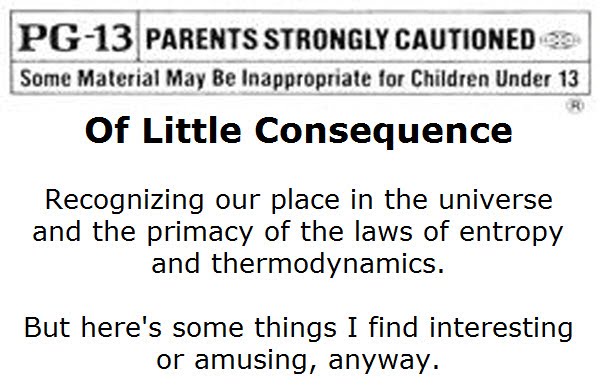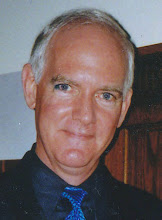Time for some more early-nuclear age stories.
A 14-lb sphere of relatively-pure plutonium (just slightly below the 'critical mass' to cause a runaway reaction or explosion) actually went critical on two occasions at the Los Alamos Labory in 1945 and 1946. Both instances resulted in the death by radiation poisoning of a noted scientist involved.
The experiments involved were (or have come to be) known as "tickling the dragon's tail" since they both involved in some manner, slowly, slowly building up the reflections of neutrons (which cause fission in plutonium atoms) into this nicely-machined spherical piece of metal. Incidentally, the core itself was relative safe to handle, and any number of people did, holding it in their hands (it's rather heavy) and remarking how warm it was: the refined plutonium sphere gave off a fair amount of heat as a byproduct of its continuing nuclear decay.Surprisingly, it's not particularly dangerous to hold: plutonium decays by emitting alpha particles (a helium nucleus: two protons and two neutrons bound together) which which won't penetrate a few centimeters of air, a piece of paper, clothing or the human skin. When inhaled or ingested, that's another matter...
Following adapted from the Wikipedia article: http://en.wikipedia.org/wiki/Harry_K._Daghlian,_Jr.
Anyway,in the experiment, Daghlian was attempting to build a neutron reflector by manually stacking a series of 4.4 kg tungsten carbide bricks in an incremental fashion around the plutonium core. The purpose of the neutron reflector was to reduce the mass required for the plutonium core to attain criticality.
As he was moving the final brick over the assembly, neutron counters alerted Daghlian to the fact that the addition of this brick would render the system supercritical. As he withdrew his hand, he accidentally dropped the brick onto the center of the assembly. Since the assembly was nearly in the critical state, the accidental addition of the last brick caused the reaction to go immediately into the prompt critical region of supercritical behavior. This resulted in a power excursion.
Daghlian panicked immediately after dropping the brick and attempted to knock off the brick without success; he was forced to partially disassemble the tungsten-carbide pile to halt the reaction. Daghlian was estimated to have received a dose of 510 rem (5.1 Sv) of neutron radiation, from a yield of 10^16 fissions. He died 25 days later from acute radiation poisoning.
In the second (as perhaps more famous) incident using this same plutonium core, the noted Physicist Louis Slotin was also killed.
On May 21, 1946, Slotin and seven other colleagues performed an experiment that involved the creation of one of the first steps of a fission reaction by placing two half-spheres of beryllium (a neutron reflector) around a plutonium core. The experiment used the same plutonium core that had irradiated Daghlian, later called the "Demon core" for its role in the two accidents. Slotin grasped the upper beryllium hemisphere with his left hand through a thumb hole at the top while he maintained the separation of the half-spheres using the blade of a screwdriver with his right hand, having removed the shims normally used.Using a screwdriver was not a normal part of the experimental protocol.
At 3:20 p.m., the screwdriver slipped and the upper beryllium hemisphere fell, causing a "prompt critical" reaction and a burst of hard radiation. At the time, the scientists in the room observed the "blue glow" of air ionization and felt a "heat wave". In addition, Slotin experienced a sour taste in his mouth and an intense burning sensation in his left hand. Slotin instinctively jerked his left hand upward, lifting the upper beryllium hemisphere and dropping it to the floor, ending the reaction. However, he had already been exposed to a lethal dose (around 2100 rems, or 21 Sv) of neutron and gamma radiation. Slotin's radiation dose was equivalent to the amount that he would have been exposed to by being 1500 m (4800 ft) away from the detonation of an atomic bomb.
As soon as Slotin left the building, he vomited, a common reaction from exposure to extremely intense ionizing radiation. Slotin's colleagues rushed him to the hospital, but irreversible damage had already been done. His parents were informed of their son's inevitable death and a number of volunteers donated blood for transfusions, but the efforts proved futile. Louis Slotin died nine days later on May 30, in the presence of his parents. He was buried in Winnipeg on June 2, 1946.
At first, the incident was classified and not made known even within the laboratory; Robert Oppenheimer and other colleagues later reported severe emotional distress at having to carry on with normal work and social activities while they secretly knew that their colleague lay dying.
This particular plutonium core ("The Demon Core") was later used in the Crossroads Able nuclear test.
Subscribe to:
Post Comments (Atom)


No comments:
Post a Comment